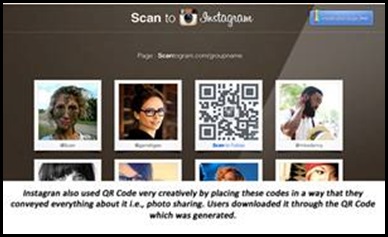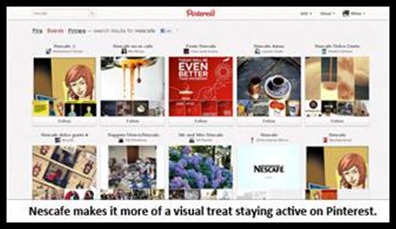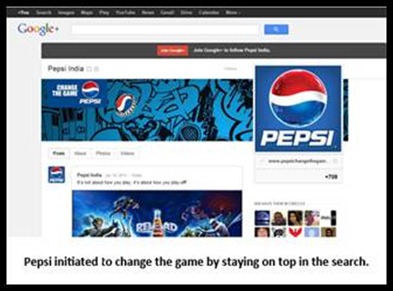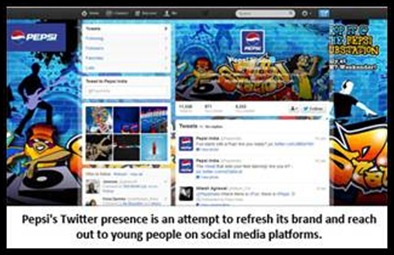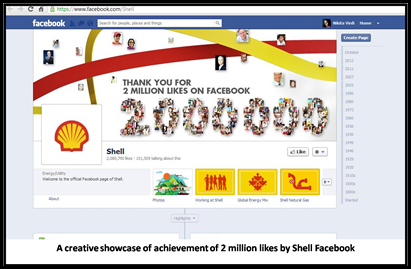 QR Codes, also popularly known as quick response codes have come up as an essential marketing trend in these few years. These square designs have been found popping almost everywhere, be it magazines, in stores, direct mail pieces etc. to name a few. QR Codes are computer generated images that help customers to directly connect with websites or online platforms without typing a URL. These codes can be easily scanned with Smartphones directing the users to the online content. The QR Code trend is catching up fast and almost all the industrial sectors, professions and brands are using it.
QR Codes, also popularly known as quick response codes have come up as an essential marketing trend in these few years. These square designs have been found popping almost everywhere, be it magazines, in stores, direct mail pieces etc. to name a few. QR Codes are computer generated images that help customers to directly connect with websites or online platforms without typing a URL. These codes can be easily scanned with Smartphones directing the users to the online content. The QR Code trend is catching up fast and almost all the industrial sectors, professions and brands are using it.
Today, majority of searches happen online through Smartphones which is another important factor for businesses to provide their brand’s information etc. in a mobile optimized format.
We all have at some point or the other seen QR Codes on posters, business cards, magazines, newspapers and all such places where advertisement is done. These quick response codes are also termed as one of the effective marketing tools. These QR Codes provide the users or viewers with a link to that particular company or brand’s website, services or contact information.
 QR Codes facilitate the sharing of targeted information with the audience or people keen to know about your brand or business, instantly.
QR Codes facilitate the sharing of targeted information with the audience or people keen to know about your brand or business, instantly.
Businesses can use QR Codes to:
-
· Provide discounts and offers
-
· Share the brand video or content
-
· Make it hassle free for people to join them online
-
· Get a quick feedback via a short survey or poll
Brand managers and advertisers are not only in search of creative places to put them but also extremely unique methods to put them. In this case, Social Media platforms like Facebook and Twitter are turning out to be the most popular places to put them with amazing content too.
It goes without saying that marketing trends come & go, but QR Codes are positioned in such a way that their use is growing every year. Firstly, the Smartphone users are increasing everyday and secondly, the QR codes direct the users to a content which is not static but one which is relevant and updated. And finally, the most important factor that makes QR Codes stand out is their compatibility with social media tools.
There are more than 200 million active users currently accessing Facebook through their mobile devices. People that use Facebook on their mobile devices are twice more active on Facebook than non-mobile users.
QR Codes can be used at:
· Stores: One can post a signage with QR Code that links to a website that gives full details about the product, offers etc.
· Events: The printed materials can have a QR Code through which customers can access detailed content related to the event.
· On Business Cards: Apart from telling about you, your business cards can direct people to a link that speaks about your business too.
· Print Ads: Along with a call to action, QR Codes on print ads speak more about the brand story beyond what can be placed on small ads. Consumers can be offered rewards on scanning these codes too.
What to do for a perfect incorporation of QR Codes into a Social Media strategy?
Well, when doing so, its better to keep it simple.
One effective approach can be to give a vCard or links to your brand or company’s social media networks such as Linkedin, Facebook and Twitter. If you have a blog or some other content linked to your business, you can also provide links to that as well.
Unlike printed collateral and platforms, the data at the URL which is linked to the QR Code can be regularly updated which can help you to update the content as and when required. Whenever you plan to add the QR Codes to your marketing strategies, ensure teaming up with a QR Code specialist who can render a smooth execution & administration, offering you an ease on managing your QR Code campaign.
Planning to use QR Codes in your Social Media Campaign?
If the answer is yes, then here’s what you need to know. There have been numerous debates on the use of QR Codes. Are people aware of the use of QR Codes? Do they know the how & why of QR Codes? Are people interested to use them? People feel that they are not appealing and have an unattractive feature.
On a positive note, if brands and businesses are planning to integrate the offline with the online marketing campaigns, QR Codes stand out useful. QR Codes have a great power to direct anyone to any corner of a website. For example, if one has a huge URL that further links to some product of some design etc. they can use QR Codes in their ATL marketing to direct them to the same.
Making QR Codes look great on an advert is one thing that should be taken care of with creative and engaging solutions.
In order to enhance the overall exposure of your brand you can direct them to social media websites. As a core part of their marketing strategy, brands are directing or shifting their users to social media platforms. Here, QR Codes can help users get their quickly. Of course with smarter phones!
For a Successful QR Code Marketing Campaign:
· There are a few steps you should keep in your mind before planning a QR Code campaign strategy.
· Plan your QR Code campaign strategy by understanding your target audience, exploring the objectives & providing suitable incentives.
· Produce Quality QR codes and do test them in order to avoid any brand flaws.
· Test the QR Codes with several readers & devices
– For clean codes, use link shorteners
– Use mobile optimized sites to link your QR Codes
· You can track your scans and gather important data with popular code management systems
· Give your codes a value; they can act as a lead generation tool too.
QR Codes are invading the market space and QR Code scanning is growing at a fast pace for Twitter and Facebook interactions. The idea is to access vast information just by scanning them.
QR Codes for social media can be used by implementing a few techniques like:
· Generate QR Code from QR code generators and link them to social media networks like Facebook, Twitter and Linkedin.
· Subscribe to an RSS feed or join a mailing list.
· Share content to praise some consumer experience or special deals & offers along with updated brand information.
· Engagement through polls, surveys and call to action can give useful data on ideas and feedback of users, their behavioural information and link to landing pages & promotions respectively.
· Targeting by finding out from where are people accessing your brand information via QR Codes on certain platforms.
· Offline and online actions by users can be linked to craft communities and raise influence.
QR Code can help a business increase their Facebook ‘Likes’ building large connections with the customers consistently. It can be placed anywhere and it allows people to ‘Share’ any content throughout the platform. One can create a link to a Twitter profile & incre ase the number of followers. With a QR Code, customers can ‘Tweet’ the content to ‘Followers’. Customers can be linked to the page, boards or maybe directly to the product pictures pinned on the boards. Adding a little dynamism to the print advertisement with a QR Code can direct users directly to a commercial on YouTube. One can also market a coupon which can later be redeemed in person after scanning the QR Code. These coupons can also be shared on social media platforms. Directing users to some app with a QR Code is also a great effort.
ase the number of followers. With a QR Code, customers can ‘Tweet’ the content to ‘Followers’. Customers can be linked to the page, boards or maybe directly to the product pictures pinned on the boards. Adding a little dynamism to the print advertisement with a QR Code can direct users directly to a commercial on YouTube. One can also market a coupon which can later be redeemed in person after scanning the QR Code. These coupons can also be shared on social media platforms. Directing users to some app with a QR Code is also a great effort.
One can create Social QR Code for different social media platforms in just a few clicks.
Don’t miss out watch the Blackberry Messenger QR Code Ad.
Instagram also took a step ahead towards QR Codes:
QR codes can direct users to websites, contact information, send SMS texts, and even help businesses and people get Facebook “likes.” To generate a QR code that can be used on a social media profile, it needs to be in a user friendly format (jpeg is a user friendly format) that will be useful when trying to integrate other applications for the QR code.
After uploading the QR code to Facebook, customize your Facebook post.
You need to customize a few components:
· Title: it is the headline which is helpful in grabbing the attention of Facebook Users.
· Description: provide all the important information about your campaign here.
· Image: place the QR Code here.
· Source: to provide the context for the campaign, the brand linked with the social QR Code campaign should host the code.
Followed by this, the campaign can be taken live on the Facebook page.
· Users will be able to view the ad of your business or website with the QR Code.
· They will scan the code and would be provided with a URL to website and an URL to share on Facebook.
· QR Code is then posted to the user’s wall & news feed and they can share it with their friends.
· There are a lot of benefits attached with a social media QR Code campaign. Your content can be shared across the platform amongst tons of users. Therefore, a huge amount of customers get enticed to your brand and business.
QR code traffic is growing in a fast pace. Brand managers can enhance their marketing strategies with these special QR Codes by bringing the online content to the mobile audience.Times ahead with QR Codes & the potential with them is limitless. It would be a really great thing to see how they imbibe the factor of connecting people with technology and rendering them enhanced experience. It is pretty exciting to wonder where these codes will stand in future when the complete content will be embedded in the code. How would you take advantage of the phenomena of QR Codes? How would you like to link it to your social Media strategies?


